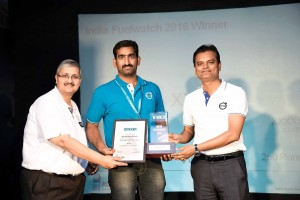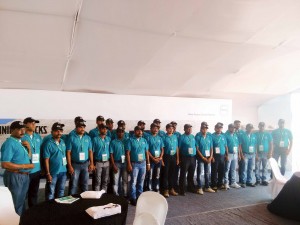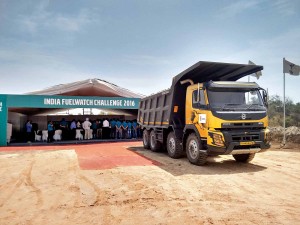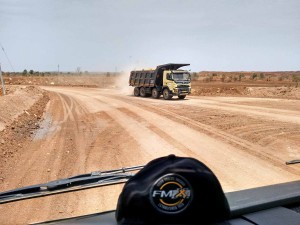Fuelwatch competition conducted by Volvo Trucks would make the driver aware of the importance to conserve fuel and environment.
Story by:
Bhushan Mhapralkar
The nondescript town of Besur, 70 km south of Nagpur will rise to fame if the Indian driver Anil Kumare Reddy, working for S V Engineering Constructions, Telangana, wins the Volvo Fuelwatch finals at Sweden in September 2016. His eligibility to compete in the finals at Sweden stems from the fact that he won the Indian leg of the competition held at Gokul Coal Mines in Besur. Making it to the top by competing against 29 equally capable drivers, Anil Kumare Reddy proved that he and his machine were the most frugal. In the finals, Reddy will compete against winners from respective Asian countries in the mining tipper category. What began in 2007 as a local competition among Volvo mining tipper drivers in Korea has grown to become a global event. It is now held for both the off-highway as well as on-highway trucks of Volvo. The off-highway event is limited to the Asian region. Over 15000 drivers from Asia have participated in the Fuelwatch competition untill now.
The first edition of Fuelwatch was held in India in 2009, and highlighted the need to save fuel and conserve the environment. The Besur event marks the seventh edition of this endeavour. Made interesting albeit by the fact that a typical heavy-duty mining truck like Volvo FMX440 8×4 consumes Rs.25 lakh worth of fuel per year. It would typically operate 24×7, the only break being that of a driver change, refuelling and maintenance. The fuel consumption average of such a truck is typically 1.5 km per litre. Instances of overloading are not rare. Designed to ferry 28-tonnes of overburden, and the GVW amounting to 49-tonnes, the trucks are decommissioned after four years. Not much is left of them by then. Such is the intensity of abuse. The drivers live longer, and are in much demand. According to G V Rao, Vice President – Product Strategy, Brand & Marketing, Volvo Trucks (India), 11000 drivers were sensitised for this edition of Fuelwatch. Out of the 11000 drivers sensitised, 230 were chosen. Out of the 230, 30 made it to Besur for the Indian finals.
In the desolate mining landscape of Besur, 30 drivers spent three days competing against each other. With temperatures soaring closer to 50 degree celsius, the drivers were treated to a four-km earthern track simulating mining operating conditions like gradients, dumping yard, etc. The track would eliminate any possibility of hindering the actual mining operations. The drivers were treated to a FMX440 with manual transmission and one with an I-Shift AMT transmission. Each driver took off from the start point, travelled to the loading area, picked up the overburden and drove to the unloading point. He then reversed the truck into the unloading area, got rid of the overburden and then drove back to the starting point. The rounds over three days included a run by each driver in the manual transmission model with load and without load. The same procedure was repeated by each of the 30 drivers on the I-Shift model. Stressing upon wanting their customers to be profitable as one of the many reasons to drive Fuelwatch, Rao mentioned that with every tipper sold the company trains two drivers free of cost. Volvo Trucks India, said A. Sreerama Rao, Senior Vice President – Sales, Marketing, Aftermarket, Volvo Trucks India, has also invested in on-site training of drivers.
The two FMX440s Volvo Trucks India deployed for Fuelwatch at Besur were that of Volvo trucks. They were driven down all the way from Bangalore. Rather than borrow them from an operator in the region. This was done to enable an ‘apple to apple’ comparison. To capture the data, Volvo Trucks India roped in its training chief Hari Babu. The team overlooking the event ensured that they arrived at precise recording of the fuel efficiency achieved. Volvo Dynafleet was used to record and calculate the fuel efficiency results.
























Pingback: Volvo Holds Indian Leg Of Fuelwatch 2016 Truck Driving Contest At Nagpur | QuickTruck